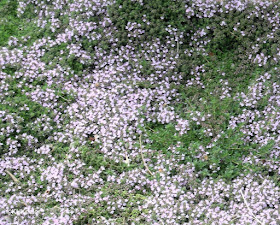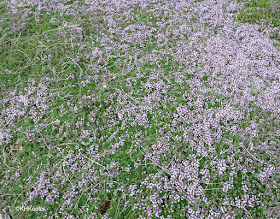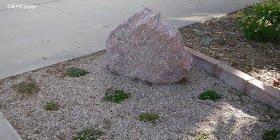 |
| Thyme |
Thyme is a small mint (mint family, Lamiaceae) with the scientific name Thymus. The thymes are from Eurasia where there are some 350 species.
Humans have liked the scent for a very long time. The oldest report of thyme use that I could find is apparently in the Ebers Papyrus, from ancient Egypt about 1550 BCE (more information) where it was used medicinally.
Several species of thyme grow in the hills of Greece. Ancient Greeks, liking the fragrance, used thyme freely, especially as an important ingredient in incense. The name thyme is from Greek,
variously described as derived from the word for incense (thymiama), the word for incense burner (thymiaterion), a word for a perfume (thuo), and/or the word for courage/bravery (thymos or thumus).







